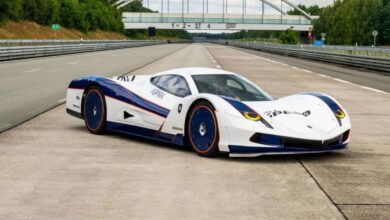Tesla Is Positioning Itself to Become the Largest Car Maker

Tesla (TSLA 1.50%) is arguably one of the most successful companies in the last decade, turning around its business from the brink of bankruptcy to become one of the most-profitable car manufacturers globally.
Despite its huge success, the company is not resting on its laurels. It’s now aiming at the top position in the auto industry by selling 20 million electric cars in 2030, which is around twice the sales volume of Toyota, the biggest automaker in the world.
Image source: Getty Images.
To become the cost leader in the industry
Tesla has been firing on all cylinders in the last few years by delivering mind-blowing growth as the world moves from internal combustion engines to electric vehicles (EVs). The top dog delivered 71% and 51% revenue growth in 2021 and 2022, respectively.
However, investors who were used to Tesla’s hyper-growth performance were disappointed with the material decline in growth rates to 19 % in 2023. Worse, revenue fell 9% in the first quarter of 2024. Similarly, operating profits declined 56% year-over-year.
While nobody likes a weakening financial performance, investors might want to look beyond these headline numbers to focus on Tesla’s strategic decision to become the lowest-cost producer. And here’s how it works.
Tesla began by reducing the sales prices of its vehicles globally in 2023 to make it more affordable to own Tesla cars. An improvement in affordability would encourage new consumers (especially those who previously avoided Tesla cars due to pricing reasons) to buy its vehicles, which would lead to higher sales volume. With a higher sales volume, Tesla would have the economies of scale to reduce its unit-production cost, giving it even more leverage to lower its selling price further.
While it’s early days, there are signs that this strategy is gaining steam. For instance, Tesla’s 2023 vehicle deliveries grew by 38%, far ahead of its automotive-revenue growth of 15%. Besides, 2023 volume growth almost kept up with that of 2022 (40% growth).
Tesla also confirmed that its cost-efficiency program has resulted in a lower cost of goods sold per vehicle in the last few quarters , and it continues to find ways to save on costs. For example, it recently announced a massive 10% staff layoff, with more cuts expected. In other words, Tesla aims to create a virtuous cycle of lower sales price, unit cost, and ultimately higher sales volume as it works toward its vision of selling 20 million cars.
Still, investors should bear in mind that to reach the 20 million target is not going to be an easy feat, considering that Tesla delivered 1.8 million cars in 2023.It will need enormous capital and solid execution to reach that target. Moreover, the journey will likely be bumpy than smooth sailing. For instance, deliveries fell 9% in the first quarter of 2024 as a result of unscheduled downtime caused by the Red Sea conflict and an arson attack at Gigafactory Berlin.
To launch new affordable car models in 2025
While price and cost reduction would get Tesla started on its journey, the company must do more than that to reach its long-term goal. Fortunately, it has another critical strategy in place, which is to launch new affordable car models .
This strategy offers plenty of benefits. It gives consumers more choices, making it easier to find what best fits their needs. Since these new models might tilt toward a more affordable pricing level, they would open up a new market segment for the company.
Another significant benefit of this move is reducing the price cuts of the existing models to spur volume growth since Tesla can now address different customer segments with separate models. Doing this would help reduce the impact of falling margins on the company. For perspective, operating margin has fallen from 16.8% in 2022 to 9.2% in 2023 .
Moreover, while the downside to launching these new models would be a substantial upfront capital investment — for retooling the factory, for product-development costs, etc. — it could result in a lower unit-production cost since these new models would be produced with more advanced materials, tools, and operational technologies.
Still, investors should monitor potential risks such as capex-cost overrun, failed product launches, etc. The opportunity might be huge, but the company must execute well to create long-term shareholder value.
What it means for investors?
Tesla’s recent strategic moves to become a low-cost producer and launch new affordable models will not be easy.
Some of these decisions could lead to materially higher capital investment and lower margins in the short term. So, there could be enormous short-term pain before the company can reap the benefits.
However, if it executes well, Tesla will gain enormous competitive advantage (economies of scale), leading to higher (and more sustainable) profits over the long run.
Investors should prepare themselves for a bumpy ride ahead.



